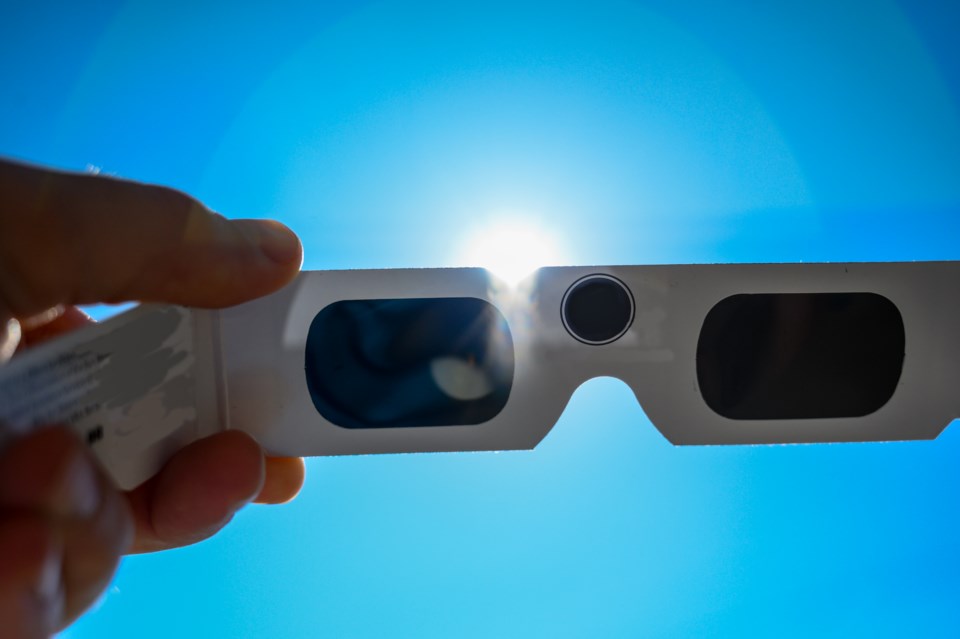Across the U.S., folks watched the solar eclipse unfold on April 8, 2024, but not everyone followed directions when it came to protective eyewear.
If you’ve been feeling the eclipse's effects today, you may have solar retinopathy. This occurs when the retina is harmed as a result of direct exposure to the sun or intense light sources such as laser pointers. The retina, a delicate tissue in the eye responsible for detecting light and transmitting signals to the brain for vision, sustains damage in this condition. Symptoms of solar retinopathy may manifest in various forms, potentially leading to permanent vision impairment.
NBC reported Google searches for "hurt eyes" surged on Monday afternoon, shortly after numerous communities in the U.S. witnessed the total solar eclipse.
According to the Cleveland Clinic, an ophthalmologist can detect indications of solar retinopathy through examination and the utilization of fundus photography and optical coherence tomography (OCT). These imaging techniques enable healthcare professionals to observe any damage or anomalies present in your retina. For instance, they may identify a small, circular, yellowish region indicative of damage.
Mild symptoms of solar retinopathy include:
- Epiphora (watery eyes)
- Headaches
- Photophobia (sensitivity to light)
More serious symptoms of solar retinopathy include:
- Blurred vision
- Eye pain
- Metamorphopsia (straight lines appear rounded)
- Micropsia (objects appear smaller than they are)
- Scotoma (a blind spot in your line of sight)
The tissue of your retina can sustain damage from the ultraviolet rays of the sun without causing immediate pain or sensation. However, following exposure, you may encounter symptoms associated with solar retinopathy, such as eye soreness and discomfort. It could take several hours or even days for these symptoms to manifest, along with any noticeable vision disturbances.
If you wore protective glasses during the eclipse but are still experiencing discomfort, make sure the glasses have the ISO 12312-2 sign on the back, as well as other clues to ensure they are real and effective.
Don't miss anything Local. Sign up for our free newsletter.




